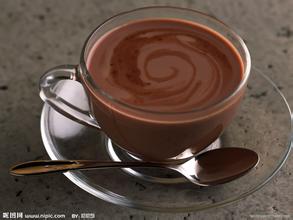Mild Nicaragua Lakadura Coffee Bean Origin and Development History and Culture Brief Introduction

In many countries, coffee production will be seriously affected for political reasons. Nicaraguan coffee industry is no exception. The 1979 revolution forced coffee planters to flee to Miami. A period of indecision followed, when the government considered whether to redistribute land, including many plantations, which led to a shortage of coffee and a decline in production, from more than 1 million bags in the early 1970s to less than 600000 bags in 1990. Now the Government has opened up the coffee industry and private owners have taken control of the market. The best coffee is produced in Sinotega and Novo Segovia in Matagalpa. It has moderate acidity, delicious aroma and is very lovely.
The excellent Nicaraguan coffee is among the highest in the world, it is mild and delicious, moderate granule, very fragrant. In many countries, coffee production has been seriously affected for political reasons. Nicaraguan coffee industry is no exception. The 1979 revolution forced coffee planters to flee to Miami. A period of uncertainty followed, when the government considered whether to redistribute land, including many plantations, which led to a shortage of coffee and a decline in production, from more than 1 million bags in the early 1970s to less than 600000 bags in 1990. Now the government has opened up the coffee industry and private owners have taken control of the market. The best Nicaraguan coffee is grown in the north and middle of the country, and the best coffee is produced in Jinotega and Nuevo Segovia in Matagalpa. The finest Nicaraguan coffee is classified as Middle Estrich Tamant Altura (Central Estrictamendte Altura) coffee, which has moderate acidity, delicious aroma and is very lovable. Coffee beans of poor quality are widely used to mix coffee.
The excellent Nicaraguan coffee is among the highest in the world, it is mild and delicious, moderate granule, very fragrant. In many countries, coffee production has been seriously affected for political reasons. Nicaraguan coffee industry is no exception. The 1979 revolution forced coffee planters to flee to Miami. A period of uncertainty followed, when the government considered whether to redistribute land, including many plantations, which led to a shortage of coffee and a decline in production, from more than 1 million bags in the early 1970s to less than 600000 bags in 1990. Now the government has opened up the coffee industry and private owners have taken control of the market. The best Nicaraguan coffee is grown in the north and middle of the country, and the best coffee is produced in Jinotega and Nuevo Segovia in Matagalpa. The finest Nicaraguan coffee is classified as Middle Estrich Tamant Altura (Central Estrictamendte Altura) coffee, which has moderate acidity, delicious aroma and is very lovable. Poor quality coffee beans are widely used in mixed coffee. Lake Nicaragua has more than 300 islands, the smallest of which is only a few hundred square meters. the largest island is Ometepee, which is 26 kilometers long and 13 kilometers wide and covers an area of more than 300 square kilometers. there are two volcanic cones, one of which is 1610 meters high, and there are many historical relics of Mayan culture on the island.
The lake is full of waterbirds, and the lake is rich in all kinds of saltwater fish, such as crocodiles, sharks, sea turtles and so on. Sharks swim along the San Juan River in the Caribbean, so swimming is prohibited in Lake Nicaragua.
Watching large and small groups of turtles climb up the reef to bask in the sun is a view by the lake. The shore of Lake Nicaragua is shady with trees, dotted with many red-roofed pavilions, the lake is blue, the lake wind is familiar, waterbirds fly, fish jump out of the water from time to time, and the blue sky, white clouds, water light and lake color constitute a charming scenery. At the beginning of the 21st century, Lake Nicaragua has been on a par with the Masaya volcano and has become two famous landscapes in Nicaragua.
The Great Wall of Nicaragua
The Great Wall of Nicaragua is located 150 kilometers west of Managua, the capital of Nicaragua. It was originally a boundary stone for the land among Indian tribes. At the same time, it also has certain defense functions, with a total length of 40 kilometers.
Nicaragua is now one of the poorest countries in Central America. Due to its poor economic foundation, the coffee industry is still relatively backward, while coffee farmers are in extreme poverty. Fortunately, Nicaraguan coffee has received some foreign aid funds to improve the quality of its coffee. The coffee produced in Nicaragua's Madagelba, Sinodega and Segovia is highly respected by coffee lovers all over the world. In particular, the high-quality Nicaraguan coffee produced in the Madagelba region is grown in the north and middle of the country. Coffee is a pillar industry in Nicaragua, producing nearly 100,000 tons of coffee beans every year. Many people who have tasted Nicaraguan coffee usually think that it is no different from Salvadoran coffee or Honduran coffee. It is full-bodied, smooth and delicate, with a slightly bitter finish, like a faint taste in a wine.
Important Notice :
前街咖啡 FrontStreet Coffee has moved to new addredd:
FrontStreet Coffee Address: 315,Donghua East Road,GuangZhou
Tel:020 38364473
- Prev

A brief introduction to the flavor and aroma characteristics of Nicaragua Lakadura coffee beans with strong aroma
The coffee industry, run by the Mayans, once boomed Guatemala's economy and dominated the national economy. Unfortunately, the political situation in Guatemala is not good for these coffee growers. High output is usually a sign of a country's overall economic prosperity. However, coffee production in Guatemala has declined relatively, at only 700 kilograms per hectare.
- Next

Colombia Fine Huilan Coffee Bean Flavor Taste Aroma Description
Coffee history in Colombia began in 1808 when a priest first brought coffee to Colombia from the French Antilles via Venezuela. Since then, the coffee industry has grown rapidly in Colombia, which is now the second largest coffee producer after Brazil and the world's largest exporter of Arabica coffee beans. Colombia's favorable climate has provided a true sense of coffee
Related
- Detailed explanation of Jadeite planting Land in Panamanian Jadeite Manor introduction to the grading system of Jadeite competitive bidding, Red bid, Green bid and Rose Summer
- Story of Coffee planting in Brenka region of Costa Rica Stonehenge Manor anaerobic heavy honey treatment of flavor mouth
- What's on the barrel of Blue Mountain Coffee beans?
- Can American coffee also pull flowers? How to use hot American style to pull out a good-looking pattern?
- Can you make a cold extract with coffee beans? What is the right proportion for cold-extracted coffee formula?
- Indonesian PWN Gold Mandrine Coffee Origin Features Flavor How to Chong? Mandolin coffee is American.
- A brief introduction to the flavor characteristics of Brazilian yellow bourbon coffee beans
- What is the effect of different water quality on the flavor of cold-extracted coffee? What kind of water is best for brewing coffee?
- Why do you think of Rose Summer whenever you mention Panamanian coffee?
- Introduction to the characteristics of authentic blue mountain coffee bean producing areas? What is the CIB Coffee Authority in Jamaica?

